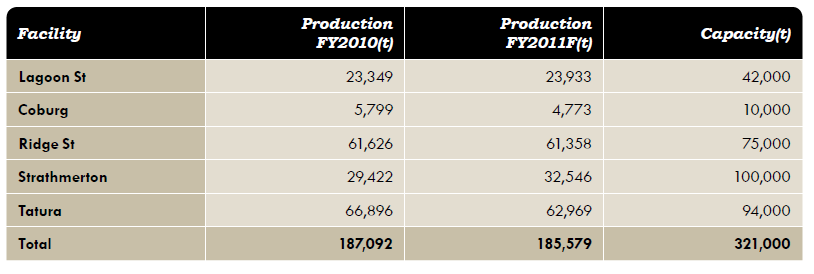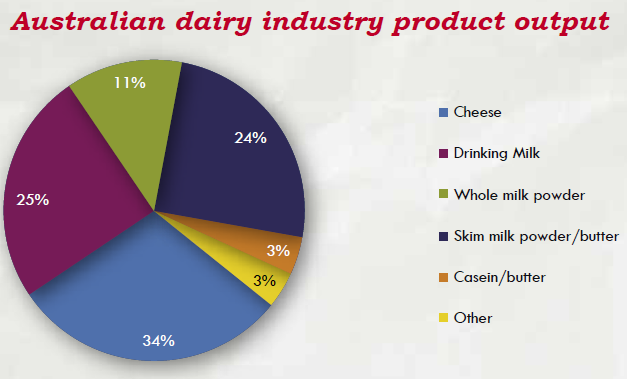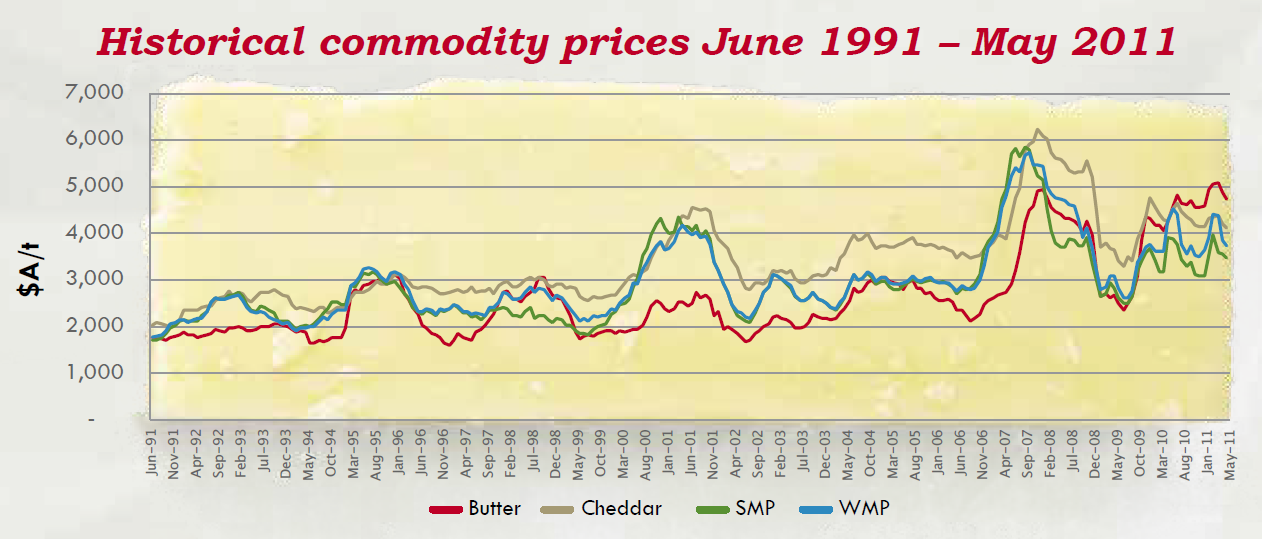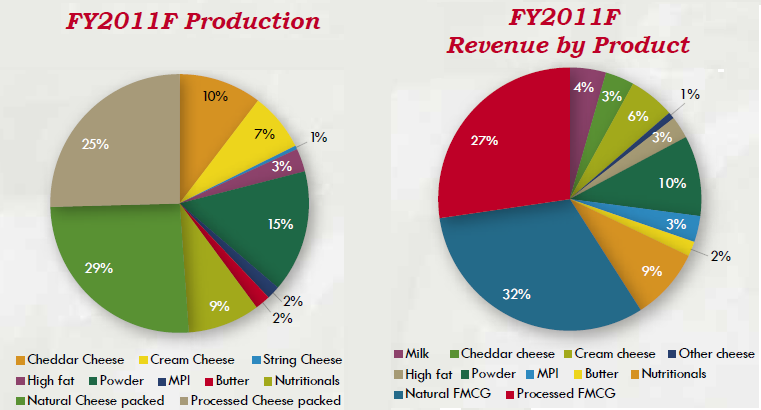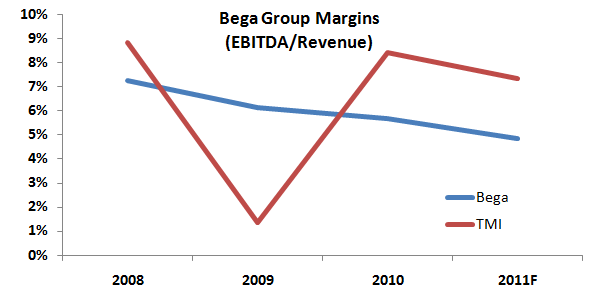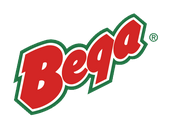 Bega – that well-known Australian food brand with the cheesy jingle – is launching an IPO, issuing 17.5 million shares at $2.00 a pop to raise $35 million. They’ll also issue 850,000 shares to Bega employees at no cost as part of the float.
Bega – that well-known Australian food brand with the cheesy jingle – is launching an IPO, issuing 17.5 million shares at $2.00 a pop to raise $35 million. They’ll also issue 850,000 shares to Bega employees at no cost as part of the float.One of the first things I read in the prospectus was the reason for the float, which is to reduce debt (Bega sees no short-term growth opportunities that the capital can be used for). In my opinion this is not a good sign – the return that Bega will get on the raised capital is limited to the interest they currently pay on their loans. If the company was good enough to invest with in the first place, they should be able to reduce their debt through their own earnings rather than a quick (and dilutive) capital fix.
I believe that companies usually raise capital to reduce debt for one of two reasons:
- They look at an over-leveraged balance sheet and get scared, running to the equities market to reduce their borrowings (many companies did this during the GFC),
- They want to deleverage now so they can go on a leveraged buying spree later.
Given the prospectus mentions positioning Bega “to participate in industry rationalisation, which is expected to be part of future growth”, Bega may be seeking capital for both reasons.
Let’s take a closer look (all images and tables taken from the Bega prospectus unless otherwise noted).
The Business
Bega started out as a farmers cooperative (The Bega Co-operative Creamery Company) in 1899, changing to an unlisted public company in 2008. Today they handle approximately 186,000 tonnes of diary product, including the manufacture of cheddar, cream and mozzarella cheese, milk powders, butter, cream, infant formula and milk biologicals such as colostrum. Bega’s processing businesses include cutting, packaging and processing cheese products supplied by other vendors for sale by customers such as Fonterra, Kraft and Aldi stores. Bega also license Fonterra the right to use the Bega brand name in selling cheese products in Australia (in return for a royalty). In addition to its domestic sales, Bega exports to 40 countries world-wide. As of May 2011, Bega employed 1934 personnel.
In 2007 Bega purchased a 70% stake in TMI – a Goulburn Valley cheese product company – and is planning to acquire the remainder of TMI with a rights issue after the float is completed. Over 75% of TMIs revenue comes from exports, mainly to Asian markets. Bega also owns 15% of the ASX-listed Warrnambool Cheese and Butter (WCB) and 25% of CCFA (a milk processing joint venture with Dairy Farmers).
Bega has 5 manufacturing and processing facilities – their FY11 production levels and capacities are shown below.
The large difference in production levels and capacities raises some interesting questions. Having 40% of factory capacity lying idle reinforces the earlier statement about no short-term growth opportunities, in which case Bega may have over-capitalised on their facilities. It may also point to maintenance or utilisation issues with plant – Bega only purchased the Strathmerton and Coburg plants in FY09, so they may still be ramping up production at those facilities.
Bega sees the large capacity gap as a source of opportunity for future growth – which it is – but investors should keep an eye on the production-capacity gap into the future to ensure capital is being efficiently utilised.
The Industry
The production split of Australia’s diary industry is shown below:
The Bega Group takes in 585 megalitres of milk per annum – approximately 6% of Australia’s total production – for processing/manufacture into other dairy products. According to figures from the Diary Australia website (and the prospectus), Bega accounts for about 30% of Australia’s annual cheddar output and 17% of milk power output – so it’s a significant domestic player in the manufactured diary product industry. Bega has only a small stake in the milk consumption industry (through the CCFA JV), which reflects its business focus on value-added dairy products.
Internationally, the diary industry treats manufactured diary products (butter, cheese, milk powders) as commodities whose prices fluctuate based on supply and demand (drinking milk prices are typically determined by domestic market demands). A graph of global diary product prices is shown below (note the dip around 2009):
Global dairy exports are dominated by New Zealand (35 percent of all export sales), the European Union (32 percent of all export sales) and Australia (10 percent of all export sales). Almost all countries have significant trade barriers (quotas, tariffs etc) on the import of dairy products.
According to the prospectus, 25% of Bega’s revenue heads for the export market (through its 70% ownership of TMI).
Financials
Bega’s production and revenue splits are shown below:
The key financials from Bega’s prospectus are as follows (FY11 forecast unless noted otherwise):
- Revenue: $943m
- EBIT: $53.4m
- NPAT: $15m
- Equity: $193m (as of 26/12/10), $224m (post-float)
- Interest-bearing debt: $151m (pre-float), $119m (post-float)
- Net tangible assets: $200m (pre-float), $231m (post-float)
- Plant and Assets: $195m
- Cash and equivalents: $11.3m
- Number of shares: 109m (pre-float), 127m (post float)
Note: I have assumed 50% of the $15m NPAT for FY11 is reinvested into Bega, with the remainder distributed as dividends.
For a little historical perspective, below are the EBITDA margins (EBITDA divided by revenue) of both Bega and the TMI division:
From these numbers we can deduce the following key metrics for the post-float Bega:
- Return on equity (ROE): 7.2%
- Return on funds employed (ROFE): 4.6%
- Equity per share: $1.83
- Earnings per share: $0.12
- Borrowings per share: $0.94
Despite the float’s goal of reducing leverage, debt will still be very high in the post-float Bega Group, sitting at 7 to 8 times FY11 NPAT. ROE of 7.2% is mediocre, with ROFE dropping to less than 5% due to the high levels of debt.
The 4-year Bega and TMI margin results show a concerning downward trend. However, Bega claims some of the drop is due to “low returns from Coburg and Strathmerton reflecting transitional costs incurred in their first year of ownership”. The sharp drop in TMI’s 2009 margin was due to the low global dairy commodity prices of 2009 – highlighting TMIs exposure to the global commodities market.
Interestingly, the prospectus did not provide any sort of FY12 forecast. Given that we are currently in FY12, I would have thought a float prospectus would have provided a forecast for potential shareholders. Although FY12 budgets have already been prepared, the prospectus stated (section 1.6.1, page 16):
Due to the uncertainty of such matters as the completion and timing of the Merger, the volatility of exchange rates and international dairy product prices, the Board does not believe that it has a reasonable basis to provide these budgets in this Prospectus
While Bega Cheese has been managed on a commercial basis, ASX listing is expected to bring a sharper focus on shareholder returns, while still ensuring that market competitive milk prices are paid to Farmer Suppliers”
Maybe I am just being pedantic and expect too much from my prospectuses, but neither of these statements fills me with confidence.
Management
The board consists of mostly dairy farmers/suppliers, with five of the six directors currently supplying milk to Bega. Two of the board members appear to have significant corporate experience (i.e. outside non-listed or private companies/organisation within the Australian dairy industry). Longevity is common, with five of the current Directors having been in office for a minimum of ten years each.
Not much detail is given in the way of director and senior management remuneration. The Chairman has a base salary of $175,000 p.a. whilst the maximum total remuneration for any director is set at $900,000 (unless approved otherwise by shareholders).
An interesting aspect of the board set up is the minimum representation requirement for farmers/suppliers. The prospectus indicates that a minimum of 4 board seats must be held by a farmer supplier. Given that the maximum number of board members is 8, this requirements means the company will not comply with ASX Corporate Governance Recommendation 2.1, which provides that a majority of directors should be independent directors. This feature is a legacy of Bega’s co‑operative past (where control was held by farmer/suppliers) and is reinforced by shareholding limits. For the first two years, no entity may own more than 5% of all Bega shares. This automatically increases to 10% after two years, 15% after 5 years (assuming a positive shareholder vote) and then finally in year 10 all shareholding limits are removed.
Obviously Bega has been successfully run as a co-operative business in the past. However, the shareholding and board representation requirements would make me nervous as a potential investor in a listed company. The farmer/supplier/directors are in a conflicted position – as farmers they would want the highest price for their milk but as directors of Bega they should want to pay the lowest price possible to ensure the best shareholder returns. While the 5 current farmer/suppliers/directors only supply 2.7% of Bega’s annual milk intake, there is still an undeniable conflict of interest.
Opportunities
- Well-established brand name in Australia;
- Significant growth potential for manufactured dairy products in developing countries, particularly in the Asian region;
- Ability to grow output organically with current plant and facilities;
Risks
- Very high debt levels, even after the float proceeds are used to deleverage;
- Exposure to the price fluctuations of global dairy commodity markets, as shown by the sharp drop in 2009 revenues;
- The continued strength of the Australian dollar will have a negative impact on export revenues (dairy commodities are priced in US dollars);
- Exposure to Australian climatic variation, which impacts the availability and price of domestic milk;
- Competition from established brands dairy brands (e.g. Coon, Mainland);
- Exporting of dairy products is exposed to sovereign risk via the protective policies of importing nations;
- Possibly conflicted nature of the board, with majority representation by farmer/supplier directors.
Summary
So Bega is a fairly big player in the Australian manufactured dairy product industry. Its financial figures are on the mediocre side, with ROE around 7% and high levels of debt – even after the float capital is used to reduce borrowings by $31m. It has room for organic growth with its current facilities, although the prospectus does make reference to expected consolidation in the Australian dairy industry in the future – which indicates Bega is also keeping an eye out for acquisitions.
Bega’s co-operative history is being partially retained by a minimum farmer/supplier representation requirement for the board, as well as limitations on the number of shares to be held by any one entity. This leaves open the possibility of a conflict of interest as the directors chase maximised milk prices for their supply businesses whilst also trying to extract maximum returns for Bega shareholders – somewhat mutually exclusive goals.
Is the Float Good Value?
This is the part we love most at Empire – the valuation. Bega shares will list at $2.00 on the 29th of August. Using a normalised ROE (accounting for franking credits) of 8.7% over 5 years, equity per share of $1.83 and assuming 50% of NPAT is reinvested, we value Bega shares between $1.50 and $1.70 (using required returns of 12% and 15% respectively). This means we think the float is overpriced by about 20% to 30%.
Given that Bega’s ROE is below our typical required return of 15%, it would require a float price closer to its equity per share of $1.83 for us to consider it fair value. However, even if the float price were lower we’d consider Bega non-investment grade due to its low ROE and very high levels of debt, as well as concerns about the representation requirements of the board.
So while we may like a slice of Bega on our ham and cheese sangers, as value investors we’ll be staying clear of the float. Until ROE improves and debt levels reduce, Empire will liken Bega shares to an extra sharp vintage – too rich for our tastes.
Disclosure: The author is a Director of a private investment company (Empire Investing Pty Ltd), which has no current interest in the businesses mentioned in this article. The article is not to be taken as investment advice and the views expressed are opinions only. Readers should seek advice from someone who claims to be qualified before considering allocating capital in any investment.
